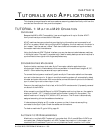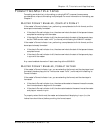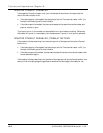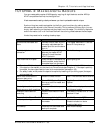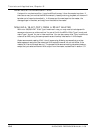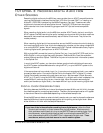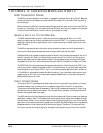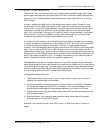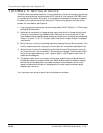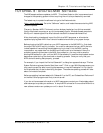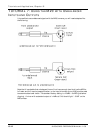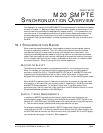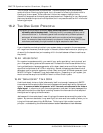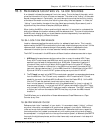
Tutorials and Applications, Chapter 15
15-8 ALESIS M20 REFERENCE MANUAL 1.06
TUTORIAL 4: COMBINING M20S AND ADATS
M20 T
RANSPORT SPEED
The M20’s transport speed is much faster in engaged mode than the original ADAT. Because
of this and other unique features, make the M20 the master (ID 1) and any ADAT(s) should
be the slave(s).
When locating, the M20 will locate to a specific tape position, stop, and wait for the ADAT(s)
to catch up. Therefore, until you need more than 8 tracks, don’t put any tape(s) into the slave
unit(s) so that the M20 won’t have to wait for the slave(s) to locate.
SAMPLE RATE VS. PITCH CONTROL
The M20’s Sample Rate function, which allows choosing between 48 kHz or 44.1 kHz
sampling rates, was not directly available on the original ADAT. This function also allows
selecting a digital clock for applications involving the recording of digital audio from a non-
ADAT source.
The M20 writes sample rate information when formatting a tape, so that it automatically
knows a formatted tape’s sample rate (even though either rate may be used).
Example: When playing back a tape formatted at 48 kHz with the sample rate set to 44.1 kHz,
the 44.1 indicator will flash, to indicate that you are using 44.1 kHz but it isn’t the original
sample rate used when the tape was formatted. The same goes when you play back a tape
formatted using 44.1 kHz with the sample rate set to 48 kHz; the 48 kHz indicator will flash.
The M20 Pitch Controls supplement the sample rate selection. With the original ADAT, you
had to pitch down a tape to play back at a 44.1 kHz sample rate. If you play back a tape that
was formatted on an original ADAT, it will not have any sample rate information written on
it. The M20 will automatically select the 48 kHz setting. If you had been pitching-down such
a tape to play at 44.1 kHz, you must press the Sample Rate button to manually change the
M20’s sample rate to 44.1 kHz.
INPUT MONITORING
The original ADAT was designed so that when monitoring a track’s input signal, you heard
the actual analog input ó the signal did not pass through the A/D and D/A converters.
There was an advanced feature, accessed by holding Set Locate and pressing All Input, that
allowed monitoring after the converters. This allowed hearing exactly how the signal would
sound when played back from tape.
The M20 monitors the input signals through the converters at all times (unless overridden as
described in section 8.6d). This creates a minuscule delay as the digital audio passes through
the converters’ buffers. If you were to listen to both the original signal on your mixer and the
tape return of the same signal coming back from the M20, the M20’s delay would cause some
phase cancellation when combined with the original signal. Therefore, it is important that
you either monitor the original signal or the tape’s input signal on your mixer, but not both.




